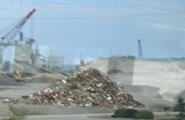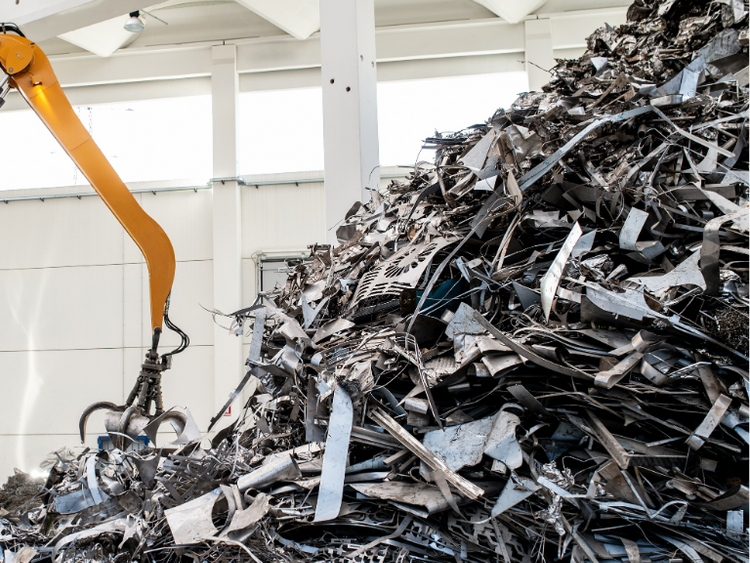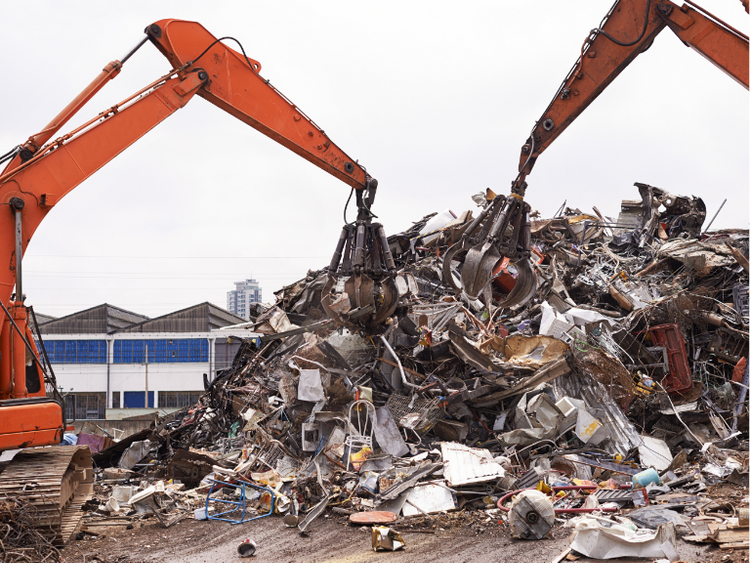Scrap Prices North America

Ferrous Scrap Prices Expected to Decline in May
Written by Tim Triplett
April 29, 2018
Steel Market Update’s scrap sources expect ferrous scrap prices to drop by at least $10-$20 per ton in May, and possibly as much as $30-$40 per ton, as spring weather increases the scrap flows and boosts supply. Adding to the downward pressure on prices, they report, is weakness in the global market.
One dealer in the Northeast expects a typical May trading pattern, with U.S. domestic scrap markets trading at lower prices than in April. “Obsolete grades will trade weaker than prime grades, though I expect all grades to see lower price levels in May,” he said. He expects shredded to trade lower by $10-$20/GT, or possibly more depending on the region, and prime grades to trade about $10 lower.
The main driver is the weaker world market and the U.S. market catching up to those lower global markets, which began to trade at around a $20-$30 discount to the U.S. market in late-March and throughout April. The U.S. domestic price premium enticed large volume U.S. exporters to sell their shredded products into the U.S. domestic market in April and will again in May, he predicted.
Export markets, however, appear to be stabilizing and are now trading in the low $350/MT CIF range for 80/20 grade, which is off the lowest levels seen over the last week. There have been about 600,000 GTs sold into Turkey over the last week, about one-third of which came from the U.S. exporters. “So, dock prices will decline in the next week or two, but the exporters will still need to fight to procure material to land cargoes as we get further into May. By all accounts, U.S. domestic demand remains very firm, and should continue to be firm for the foreseeable future,” the dealer said.
John Harris, president of Aaristic Services, Inc., believes scrap prices could decline even more than conventional wisdom, by as much as $30 to $40 per ton, as seasonal market characteristics attempt to align.
Climate and transportation issues will weigh on prices, he explained. The spring thaw above the 40th latitude has come a month later than usual, and half loads are extended for another month until the end of May. Spring peddler scrap has just started to flow and shredders in April began lowering their scale prices by $10 to $20. Planned spring demolition and construction projects have been delayed by both spring flooding, frost still in the ground and half-load trucking problems. Flooding of major commercial rivers is affecting barge traffic.
Mill utilization rates are holding around 76 percent even with steel prices exploding to more than $800 per ton, creating an approximate $500 spread between shred and hot band. “What’s wrong with this picture? Why aren’t utilization rates at 85 percent? Is it all about Section 232 and its selective exclusions?” Harris asked.
Scrap prices in both Turkey and the Far East are dropping as 80:20 HMS is at $345/MT CFR Turkey and $342/MT CFR Vietnam. Iron ore prices are also sliding in the Far East as 62% Fe is at $66/DMT CFR Qingdao, China, which is caused by China’s high dock inventories, he said.
Scrap that has been continually exported from the U.S. will now be looking for homes in local and regional markets. Further, some major flat carbon EAF mills are importing seven to 10 cargoes of prime scrap from the EU. Why would this be happening? Two reasons, Harris said. First, flat carbon EAFs need low CU for high-margin steel grades and all prime bush and bundle scrap in the EU is generated from HRC steel produced in BOFs from liquid iron produced from blast furnaces (there are no flat carbon EAFs in the EU except for one location). Second, most of the flat carbon EAFs in U.S. are in the southern region and accessible by barges or vessels. The small number of BOF operations in the U.S., at less than 40 percent of production, cannot generate sufficient bush to satisfy the low residual steel needs for the flat carbon EAFs (normally 30 percent of the charge mix).
Expect Turkey to purchase fewer deep-sea cargoes from NAFTA as their exports to the U.S. are falling under Section 232. U.S. exporters are scrambling to find other destinations to export such as Africa, Central and South America and Mexico.
The average RMDAS prices for April indicated bush at $404/GT, shred at $386/GT and #1HMS at $364/GT. The import cargoes of bush and pig iron, and DRI’s current production in the U.S., will hold bush prices down.
“May and June are historically bottom-of-the-trough months for yearly demand and pricing, and this year shouldn’t be any different,” Harris said.
Scrap guru Mike Marley of World Steel Exchange Marketing predicts scrap prices will decline in May by a more modest $10 to $20 per ton. “The market probably won’t settle until late next week because the mills and their brokers see this as a buyers’ market. Waiting may give them more bargaining leverage,” he noted.
He pointed to two reasons for the decline. First, the flows of obsolete scrap into dealers’ yards have risen as expected now that spring is here. At the same time, many dealers still owe a lot of scrap to some mills because of the difficulty getting enough railcars and trucks to deliver the scrap they sold last month.
Second, while prices will likely be off for shredded and heavy melt, there won’t be as much of a decline in prime scrap prices. The price spread between busheling and shredded has shrunk to about $10 per ton and that’s low enough to encourage some of the integrated mills to switch the melt mix and buy more prime scrap instead of shredded, assuming they can find dealers with railcars who will ship them enough bundles. If shredded falls by more than $20 per ton, that may keep them buying shredded instead of bundles, Marley said.
He does not expect widespread cancellation of old unshipped orders. Cancelling those orders would leave some mills will little or no scrap in their supply pipelines at the start of May. There will probably be some selective cancellations. The distant dealers are the most vulnerable because their scrap is more expensive, and the railcar shortage has more impact on them. Dealers who are closer to a mill may be able to deliver scrap in their own trucks or through local independent truckers.
Another factor likely to drive down prices is the amount of scrap imports, Marley said. This includes about 10 cargoes of bundles and busheling from western Europe and, supposedly, a 40,000-tonne cargo of shredded scrap from eastern Canada. Nucor reportedly has bought eight of those—five headed to Gulf Coast ports for its mills in the South and three to Nucor Berkeley County. The other two are said to be destined for Big River Steel. It’s unclear whether SDI has any imported scrap coming in. All told, that’s about 400,000 tonnes of imported scrap. Nucor may be building inventory ahead of the planned maintenance shutdown of its DRI plant in Convent, La., in June, Marley said.
Imports from Canada may be weaker, however. Weight restrictions on many Ontario highways have been extended until the end of May and there is the threat of a strike on the Canadian Pacific Railway, he added.
U.S. exporters sold two or three cargoes to the Turkish mills this week, but prices were only off by about $2 per tonne from the last deals a week ago. Marley doesn’t see any drastic change in the U.S. exporters’ offers or prices unless there is a steep drop in prices and demand at the U.S. East and Gulf Coast mills. The Turks can get cheaper scrap from western Europe and the Baltic. Those prices are about $10 per tonne below the U.S. prices, but they are still willing to buy from the U.S. Turkish sales of rebar and other long products may not be as weak as some have reported. Also, it’s spring and that’s the start of the construction season in Europe and other regions, as well as the U.S., Marley said.
Prices and demand in Asia for containerized scrap rose last week, but that was a result of U.S. dealers holding back scrap and not selling as much as the Taiwanese wanted to buy. Demand from the Indian subcontinent is still good, but their buyers are waiting to see where the U.S. domestic market’s prices settle. There are still no significant bulk cargo sales from the U.S. West Coast to Asia, Marley reported.

Tim Triplett
Read more from Tim TriplettLatest in Scrap Prices North America

US ferrous scrap market lands flat in July
The US ferrous scrap market settled sideways in July.

HRC vs. prime scrap spread widens in June
The price spread between HRC and prime scrap widened in June.

Ferrous scrap pricing sideways in June
Ferrous scrap prices in the US have remained stable from May to June.

HRC vs. scrap spread widens over $150/ton in March
The HRC vs. prime scrap spread increased again in March.

HRC vs. prime scrap spread increases in February
The price spread between hot-rolled coil (HRC) and prime scrap widened in February ahead of the implementation of President Trump’s tariffs on steel.
